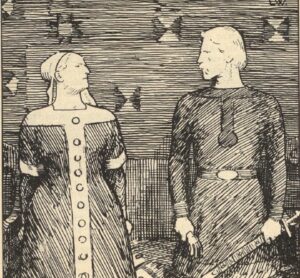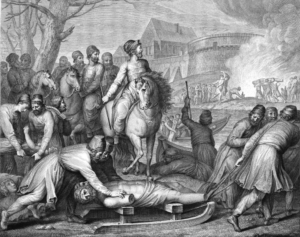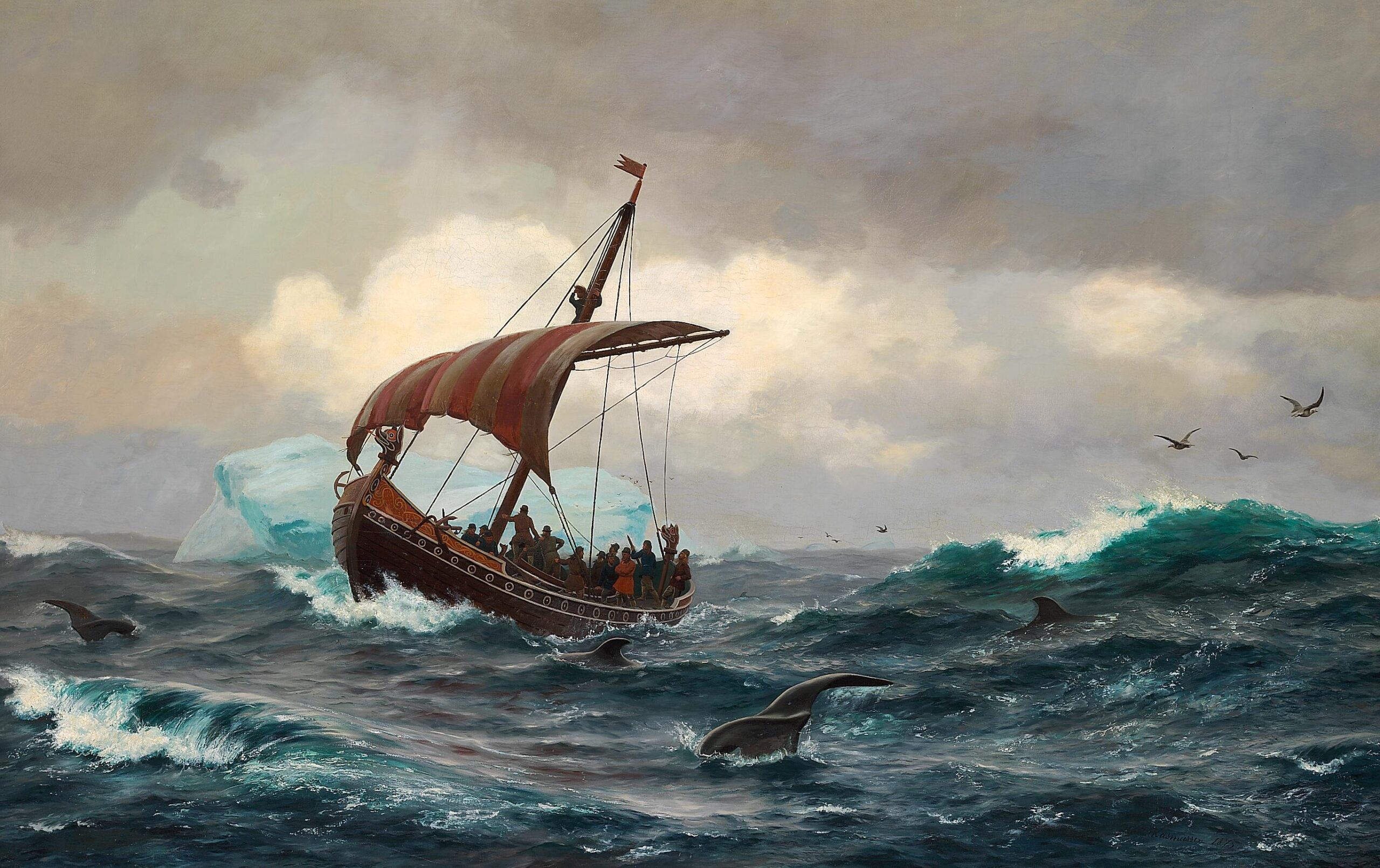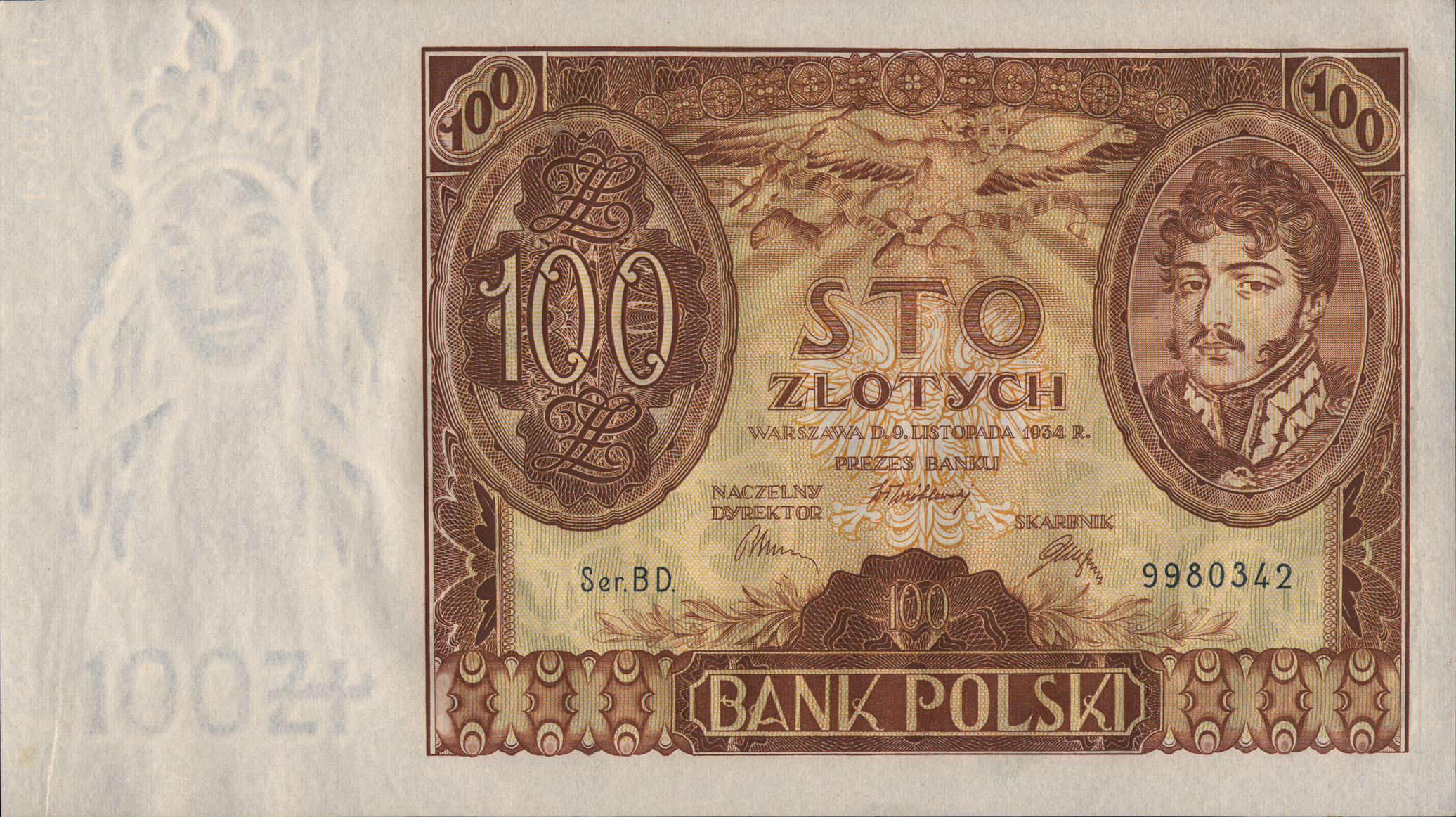There is no doubt that the newcomers from Scandinavia did not found Poland. For the state ruled by the Piast dynasty was established before they reached the region of Wielkopolska (Greater Poland), Mazowsze (Mazovia) or Kujawy (Kuyavia), i.e. its cradle. Although the links between the Piasts and the Vikings are sometimes overestimated, this does not mean there were none.
by Jakub Jagodziński
Archaeological evidence identified with the Scandinavians is known from the area of Mazowsze and Wielkopolska, but also from Pomorze (Pomerania) and Śląsk (Silesia), later incorporated into the state ruled by the Piast dynasty. Although radical theses attributing the founding of the Polish state to the Vikings have been refuted, it is worth explaining what links existed between the newcomers from the north and the Piasts.
What did they leave behind?
Issues concerning the Vikings are extremely popular in Poland. It is a pop culture phenomenon, which has made everything related to the Viking Age attractive to an ever-increasing audience – not necessarily researchers of the past. Viking motifs can be found on television and in advertisements, and there is great interest in historical festivals referring to the early medieval Scandinavians. Widespread enthusiasm for the Viking Age has led to an ahistorical account of Scandinavian influence on the origins of the Polish state. Among the erroneous theories circulating widely is the already debunked concept of the Scandinavian origins of Mieszko I. A great deal of controversy is aroused by objects wrongly attributed to Scandinavians and discovered on the territory of the state of the first Piasts.

Some researchers attributed the Scandinavian provenance, among other things, to finds of weapons, horse equipment or unusual graves (especially chamber and boat graves). Critical analysis, however, has shown that many of the purportedly Scandinavian archaeological testimonies, should be identified with the Slavs (pagan or Christian), and that the forms of some finds are so common in different parts of Europe that considering them as ‘Scandinavian’ has proven a misappropriation. However, some of them do indeed come from the north, so it would be untrue to say that the Scandinavians in the 11th-12th centuries left nothing behind in Poland.
The largest number of Scandinavian artefacts on the territory of present-day Poland were discovered outside the Piast state territories – we are talking about the Scandinavian emporium of Truso (located on the Slavic-Baltic border), the Bardy-Świelubie-Kołobrzeg complex or Wolin, richly depicted in written sources. However, leaving aside the areas of Pomorze not controlled by the Piasts, the presence of Scandinavians in Wielkopolska and Mazowsze is confirmed by specific archaeological discoveries, which include: a gaming pawn with a runic inscription and a horseshoe-shaped clasp from Kałdus, a gold plate decorated with a triquetra motif from Ostrów Lednicki, shield-shaped clasps and wooden spoons with an interlaced motif from Żółte, phyllite whetstones from Santok, a horseshoe-shaped clasp from Ostrów Tumski in Wrocław, objects decorated in the chain-and-ring style from Gniezno, Giecz, Ląd or Napol, additionally a belt fitting with the motif of Thor’s bident and hammer from Bodzia may indicate Piast-Ruthenian contacts. There are, of course, more objects of this type. A common feature of the artefacts listed here is their Scandinavian symbolic meaning (in the case of ornaments) or origin (in the physical sense, the objects must have been made from Scandinavian raw materials, e.g. phyllite objects).
An important supplement to the study of the phenomenon in question are bioarchaeological analyses, which indicate the foreign, likely Scandinavian, origin of some of the deceased (graves from Ciepłe and Napole). However, these are individual situations and it is difficult to speak on their basis about the presence in the Piast state of numerous groups of newcomers from the north.

Contacts between the first Piasts and the Scandinavians are also indicated by dynastic marriages. The most important example is the daughter of Mieszko I and sister of Bolesław I the Brave, known by the reconstructed name of Świętosława. The Piast dynasty is identified with Sigrid Storråda, well known from the sources, i.e. the wife of Eric the Victorious and Sweyn Forkbeard. Researchers assume that ‘Świętosława’ had an important role in the diplomacy of the time, and it is extremely telling that she was queen of Denmark, Norway, Sweden and England during her lifetime. One of her sons was the famous King Cnut the Great, whom Mieszko I’s daughter may have accompanied during the establishment of power in England.
Who were the Vikings in relation to the Piasts?
So far, there have been several proposals as to how to interpret the presence of Scandinavian objects from the Piast state. One of the more popular ideas assumed that they were warriors making up Mieszko I’s troop. Apart from the debatable chronology of such an assumption (the oldest Scandinavian objects from the territory of Wielkopolska date from the very end of the 10th century or the beginning of the 11th century), it is difficult to even find a convincing argument for the fact that they were warriors. Discoveries of weapons that can be considered ‘Scandinavian’ are scarce: even taking into account those from outside of the Piast state, there are fewer than 100 objects (only several from the Piast domain itself), which is completely marginal compared to the territory of the British Isles or Ruthenia. Moreover, the provenance of the weapon finds is difficult to establish, as we are talking about forms known not only from Scandinavia, but from different parts of Europe, which indicates a ‘European’ rather than a ‘Scandinavian’ style and provides a rationale for pointing to the ‘elitism’ rather than the ‘ethnicity’ of these objects. Of course, it can be assumed that the alleged Scandinavian forces in the service of the Piasts used Slavic weaponry. However, it would then appear logical to assume that such a significant element would also have been discovered in a funerary context. On the other hand, the foreign (Scandinavian) origin of the deceased was found only in the case of single burials, which is confirmed by genetic studies and analyses of strontium isotopic ratios. It is also difficult to come up with a convincing explanation as to why the Piasts would have had to use visitors from Scandinavia. Taking all this into account, the idea that Mieszko I had a Scandinavian troop is, in my view, a multi-layered hypothesis.
Other concepts rightly assume a later metric for the Scandinavian artefacts. Among the proposed solutions, there has been a suggestion that the artefacts discovered in Wielkopolska are traces of the retinue of Świętosława’s return to Poland. According to this conception, they would be gifts or objects of trade that the elites accompanying the daughter of the Polish ruler took with them. However, it is difficult to point to an analogous situation in other countries, and the wide dispersion of Scandinavian objects indicates that the group was unlikely to have been closely associated with a single woman returning to her father’s country.

The final and, in the opinion of the author of this article, most likely concept, assumes that the discovered artefacts are a remnant of Scandinavian merchants, who appeared in the centre of the Piast state with some diplomatic mission. According to the writer of these words, their presence may have been connected with an attempt to resolve a crisis in the slave trade – a procedure in which the Piasts also mediated. In such case, the large dispersion of objects of Scandinavian origin could be explained by the necessity for the newcomers from the north to reach the various centres involved in the trade, and to have direct contact with their Slavic partners. At the present stage of research, however, we are not in a position to decide unequivocally who the newcomers from Scandinavia in the Piast state were.
However, we can assume that relations between the state of the first Piasts and the newcomers from the north were prosperous. This is evidenced by the presence of various Scandinavian subjects in Poland at the beginning of the 11th century, but also by the establishment of dynastic relations, in which the sister of Bolesław I the Brave played a very important role. The scale and nature of the mutual relations were, however, incomparably more modest than in the case of Scandinavian links with the Baltic Slavs (great mutual influence) or Ruthenia, where the Swedish newcomers had organised state structures after all.
However, it should be noted that, in light of the current knowledge, the Slavic elites in the Piast state and the Scandinavians developed cooperation on both political and commercial levels, which brought tangible benefits to both sides.
Author: Dr. Jakub Jagodziński
Translation: Mikołaj Sekrecki





